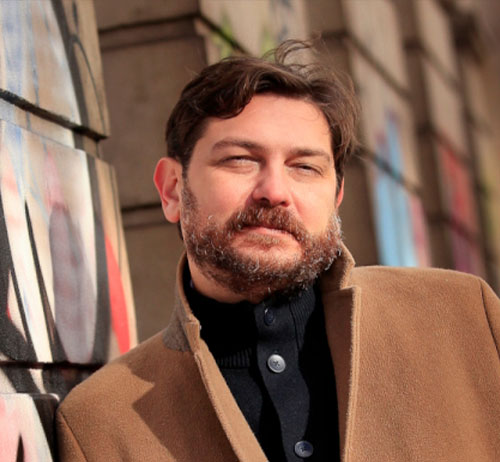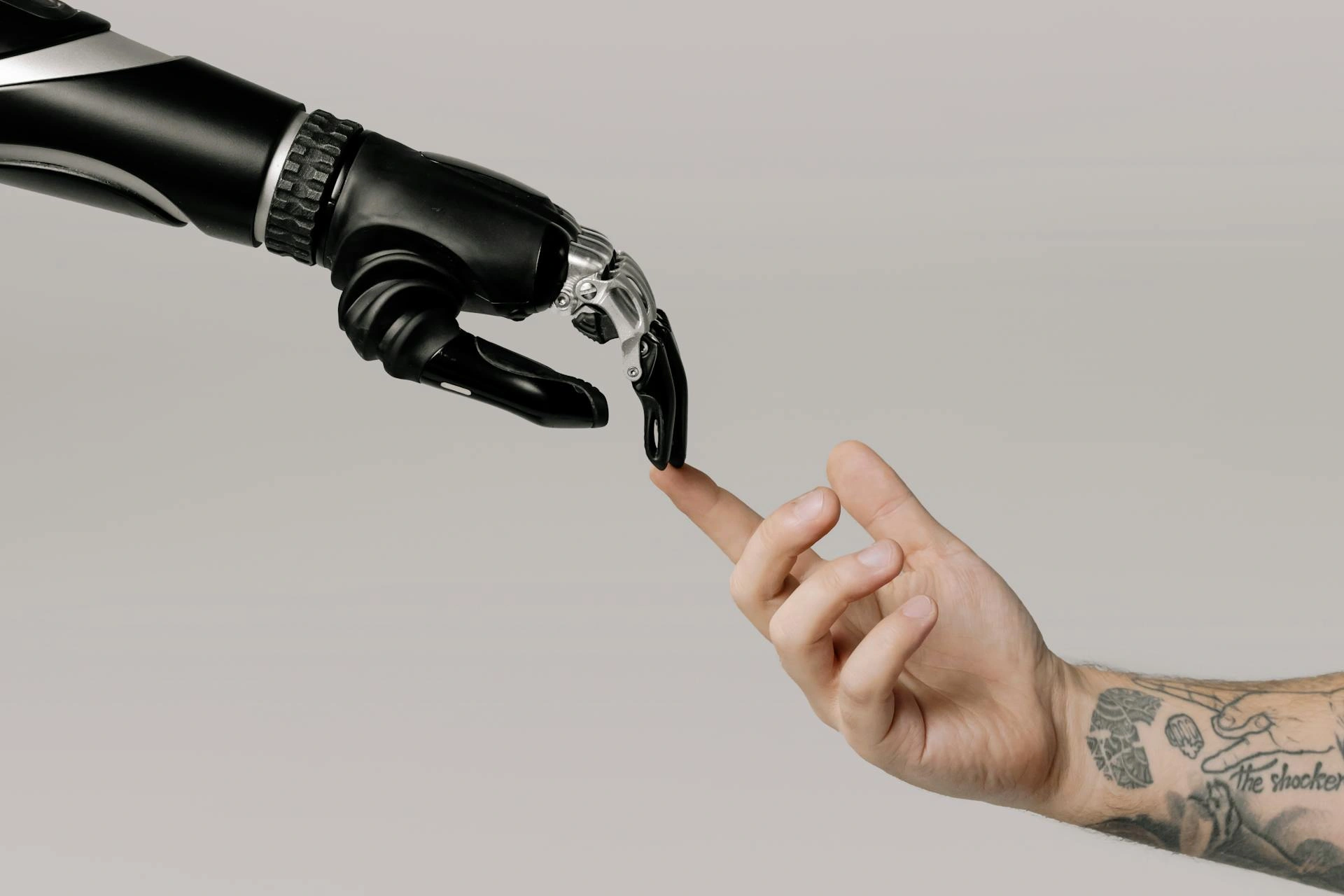Why Europe’s gaming giants face a strategic reckoning

Aleksey Savchenko
- Published
- Opinion & Analysis

Europe’s £120 billion gaming sector is at a strategic crossroads. While many companies defend failing models or place misplaced faith in AI, a quieter movement is building real momentum. Industry veteran Aleksey Savchenko outlines the choices that will shape the next decade, and explains why the third path offers the only credible route to growth
The European games industry is standing at what authors might call a bifurcation point. Every one of my books includes a chapter titled ‘Crossroads’, which explores these decisive moments – those points in time that separate one phase from another. They rarely stand out when they happen and their significance only becomes clear in retrospect once the consequences begin to unfold.
This is one of those moments. Europe’s games sector now generates more annual revenue than the film and music industries combined, yet its long-term direction remains unclear. The coming period will determine who leads, which markets grow, and whether the business models that shaped the last decade can survive another. The decisions made by executives over the next three years will decide which companies take the lead in the next wave of growth and which are left behind.
Understanding the three strategic paths now emerging is essential for any board member, investor or executive with exposure to the games sector. Each offers a distinct vision of the future, but only one presents a credible foundation for long-term value creation.
1. Preservation through optimisation
The first path reflects the approach currently favoured by most corporate players. It focuses on preserving market position through incremental optimisation. This typically involves extracting further value from existing intellectual property, refining pipelines for efficiency, and minimising risk in production and launch cycles. From the outside, this can appear rational. Established firms are under pressure to meet projections rooted in outdated assumptions. Restructuring decisions are scrutinised by investors. And timelines for technological adaptation often exceed what senior leadership feels able to manage.
But this defensive posture imposes long-term costs. Capital continues to flow into business models that no longer deliver sustainable growth. Optimising declining formats offers short-term stability but diverts attention from the underlying shift in consumer behaviour and development economics. The focus on maintaining performance metrics through annualised titles, studio consolidation and cost control has prevented many companies from investing in market development, talent pipelines and future-facing infrastructure.
This has created a system where leadership teams prioritise a handful of large transactions or product launches that can deliver short-term results, even as competitors build positions in markets that will set the pace for the next decade. In the meantime, quarterly reporting cycles highlight the same group of multimillion-pound deals passing between known entities. These surface-level indicators of health obscure the fact that the wider ecosystem is evolving beyond the reach of those following this path. The eventual result is likely to be a sharp loss of confidence in the traditional high-budget development model once margins collapse beyond recovery.
2. The illusion of AI-led rescue
The second path appeals to leaders searching for transformative solutions to structural problems. For many, artificial intelligence appears to offer a way out. When operational complexity becomes unmanageable, and legacy structures inhibit responsiveness, a leap forward in capability looks attractive.
However, this approach carries its own strategic risks. Most AI development is focused on large-scale consumer applications, not creative industry tools. Game studios are not priority customers. The companies building these platforms aim to capture horizontal consumer markets, not specialised verticals like interactive entertainment. No sector is treated as primary in this landscape, and games are rarely considered essential.
Even if that changed, most game companies lack the organisational capacity to absorb AI meaningfully. Research and development budgets have been cut during recent waves of restructuring. The teams that remain are often hesitant to introduce automation without clear protections or credible integration plans. Where implementation does occur, it tends to expand existing capabilities rather than replace them. Developers understand the risks of losing control over quality, ownership and creative process.
The broader challenge is strategic alignment. Few companies have a realistic plan for AI deployment, and most external advisers lack the sector-specific knowledge to guide them. Even large consulting firms cannot offer workable frameworks for games businesses. Claims of expertise often outpace actual delivery. This is not a sustainable route to competitive advantage.
3. Creative rebuild
The third path is more difficult in the short term but holds greater promise. It begins with a clear acknowledgement of where the market is moving. Smaller-scale productions are beginning to outperform expectations. Mid-tier companies creating original intellectual property are securing sustainable margins. Independent studios are building viable businesses that reject inflated growth metrics in favour of long-term ownership and creative control.
This is no longer a fringe trend but the most active part of the European market. It offers the opportunity to rebuild the industry around innovation, author-led storytelling, and new forms of content monetisation. Consumer appetite for originality remains strong and firms that present a clear break with legacy models are likely to attract the support of players, investors and staff alike.
Delivering on this path requires a different type of leadership. Success will depend on the ability to reform management structures, flatten hierarchies and re-centre decision-making around creative and production teams. Boards will need to prioritise adaptability and back long-term initiatives that may not yield immediate financial returns. That means resisting the temptation to delay, and accepting that transformation must begin within leadership itself.
How the funding model needs to change
Executives who are prepared to lead this shift often ask what that looks like in practical terms. If legacy models are faltering, and large-scale capital is poorly aligned with the realities of production, where should investment flow, and how should businesses be structured to support it?
The answer begins with a more grounded understanding of the production cycle itself. Game development does not follow conventional manufacturing or media timelines. Teams must be formed, ideas tested, prototypes built, and vertical slices produced before any serious investment in full-scale production can take place. Traditional investors tend to avoid this early stage, yet it is here that most of the long-term value is determined.
Funding models built around large, late-stage interventions are failing because they ignore how creative businesses actually function. Investors need to be closer to the teams they support, understand their culture and production cadence, and be willing to deploy capital in structured phases tied to milestones. The most promising opportunities today sit in the emerging space between professionalised indie and lower AA studios, where creative control remains intact but ambition is high.
This is where capital has the most impact, but only when paired with informed support. These studios often require £1–10 million in staged funding, depending on their position in the market. Professional indies may deliver at the £1–5 million level, while new IP development for A–AA studios typically require £7–10 million to reach vertical slice — the critical phase before raising publishing or partnership capital. In either case, the funding must be paired with guidance on IP development, legal structure, marketing readiness, and long-term commercial planning. The best outcomes come not from imposing control but from building trust and capability, and ensuring teams are equipped to sustain themselves after the initial cycle is complete.
In practical terms, this means abandoning generic portfolio logic in favour of tailored strategies. It also requires recognising that in game development, strong businesses are built through proximity, not just capital. Working alongside creative founders, helping them to prepare for scale, and opening networks of distribution and partnership — these are the conditions that allow new IP to flourish. It is not glamorous work, and it does not follow a fixed playbook, but it offers a path to growth that is more resilient and more relevant than any top-down model now in circulation.
What comes next
Executives who step back at the right moment, who make room for new leadership and pass on what they’ve learned, often leave the strongest legacies. When the focus shifts from control to continuity, the result is often a healthier business and a more resilient culture. The satisfaction that comes from guiding that transition is greater than any short-term commercial win.
This matters particularly in creative industries, where careers are rarely straightforward and lasting value is hard-won. Most people in this field advance through trial, adaptation, and the ability to recover from failure. What matters is whether that process leaves something behind that others can build on: stronger teams, clearer systems, and organisations that continue to function without depending on any one individual.
This turning point carries specific and urgent consequences for the European games industry, which must now move beyond the instinct to preserve familiar structures and instead focus on building the conditions for long-term renewal. Legacy business models, once reliable, are no longer producing consistent returns, and the marginal gains offered by further optimisation cannot compensate for deeper shifts in consumer behaviour, production economics and talent dynamics. As the gap widens between creative potential and institutional direction, companies will need to decide whether they are prepared to align their capital, leadership and strategic attention with the parts of the market that are actively evolving, or whether they will continue to divert resources into formats and structures that no longer reflect the way the industry actually grows.

Aleksey Savchenko is a veteran game developer, futurist, author, and BAFTA member with nearly three decades’ expertise in the tech and entertainment industries. Currently the Director of RnD, Technology and External Resources at GSC Game World, he has worked on the studio’s acclaimed S.T.A.L.K.E.R. 2. He has also worked for Epic Games, known for Fortnite and its technical achievements in middleware technologies worldwide, playing an instrumental role in establishing an Unreal Engine with Eastern European developers. He is the author of Game as Business and the Cyberside series of cyberpunk graphic novels.
Main image: Pixabay
Sign up to The European Newsletter
RECENT ARTICLES
-
 Britain is finally having its nuclear moment - and it’s about time
Britain is finally having its nuclear moment - and it’s about time -
 Forget ‘quality time’ — this is what children will actually remember
Forget ‘quality time’ — this is what children will actually remember -
 Shelf-made men: why publishing still favours the well-connected
Shelf-made men: why publishing still favours the well-connected -
 European investors with $4tn AUM set their sights on disrupting America’s tech dominance
European investors with $4tn AUM set their sights on disrupting America’s tech dominance -
 Rachel Reeves’ budget was sold as 'fair' — but disabled people will pay the price
Rachel Reeves’ budget was sold as 'fair' — but disabled people will pay the price -
 Billionaires are seizing control of human lifespan...and no one is regulating them
Billionaires are seizing control of human lifespan...and no one is regulating them -
 Africa’s overlooked advantage — and the funding gap that’s holding it back
Africa’s overlooked advantage — and the funding gap that’s holding it back -
 Will the EU’s new policy slow down the flow of cheap Chinese parcels?
Will the EU’s new policy slow down the flow of cheap Chinese parcels? -
 Why trust in everyday organisations is collapsing — and what can fix it
Why trust in everyday organisations is collapsing — and what can fix it -
 In defence of a consumer-led economy
In defence of a consumer-led economy -
 Why the $5B Trump–BBC fallout is the reckoning the British media has been dodging
Why the $5B Trump–BBC fallout is the reckoning the British media has been dodging -
 WPSL Group unveils £1billion blueprint to build a global golf ‘super-group’
WPSL Group unveils £1billion blueprint to build a global golf ‘super-group’ -
 Facebook’s job ads ruling opens a new era of accountability for artificial intelligence
Facebook’s job ads ruling opens a new era of accountability for artificial intelligence -
 Robots can’t care — and believing they can will break our health system
Robots can’t care — and believing they can will break our health system -
 The politics of taxation — and the price we’ll pay for it
The politics of taxation — and the price we’ll pay for it -
 Italy’s nuclear return marks a victory for reason over fear
Italy’s nuclear return marks a victory for reason over fear -
 The Mamdani experiment: can socialism really work in New York?
The Mamdani experiment: can socialism really work in New York? -
 Drowning in silence: why celebrity inaction can cost lives
Drowning in silence: why celebrity inaction can cost lives -
 The lost frontier: how America mislaid its moral compass
The lost frontier: how America mislaid its moral compass -
 Why the pursuit of fair taxation makes us poorer
Why the pursuit of fair taxation makes us poorer -
 In turbulent waters, trust is democracy’s anchor
In turbulent waters, trust is democracy’s anchor -
 The dodo delusion: why Colossal’s ‘de-extinction’ claims don’t fly
The dodo delusion: why Colossal’s ‘de-extinction’ claims don’t fly -
 Inside the child grooming scandal: one officer’s story of a system that couldn’t cope
Inside the child grooming scandal: one officer’s story of a system that couldn’t cope -
 How AI is teaching us to think like machines
How AI is teaching us to think like machines -
 The Britain I returned to was unrecognisable — and better for It
The Britain I returned to was unrecognisable — and better for It



























